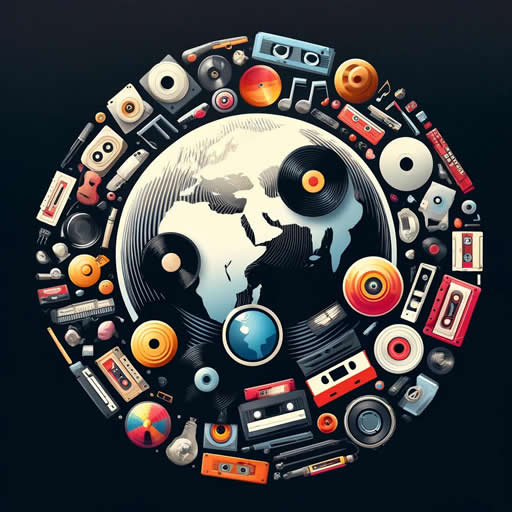The Role of Music Videos in Amplifying Social Messages: A Case Study on “Beat It”
Music videos have long been a powerful tool for artists to enhance their storytelling and amplify messages embedded in their lyrics. Few have done it as effectively as Michael Jackson’s Beat It. Released in 1983, the song was already a trailblazing anthem against violence. However, the accompanying music video elevated its impact, turning Jackson’s anti-violence message into a visual and cultural phenomenon. This case study examines how the “Beat It” music video expanded the song’s reach and solidified its role as a timeless piece of social commentary.
The Power of Music Videos in Storytelling
Music videos are more than promotional tools; they are a visual extension of an artist’s vision. By combining music with imagery, videos can provide a deeper understanding of a song’s themes, characters, and narrative. They bridge the gap between sound and sight, allowing artists to connect with audiences on a more visceral level.
For songs with social messages, music videos can serve as a call to action. They often present complex themes in a way that feels immediate and relatable, capturing attention and evoking emotions more effectively than audio alone.
The Message Behind “Beat It”
Beat It was Michael Jackson’s response to escalating gang violence and the broader culture of conflict in the early 1980s. The lyrics encouraged listeners to avoid unnecessary confrontations and prioritize their well-being over pride or machismo. While powerful on its own, the song risked being dismissed as abstract or overly idealistic. The music video remedied this by translating Jackson’s message into a concrete and compelling visual story.
How the “Beat It” Video Amplified the Message
Visualizing Conflict and Resolution
The “Beat It” video brings its anti-violence narrative to life by focusing on rival gangs preparing for a confrontation. The tension builds as the gangs gather in an abandoned warehouse, underscoring the futility and destruction of violence. Michael Jackson emerges as a mediator, bridging the divide through his iconic dance moves.
The climactic moment—a choreographed dance-off instead of physical violence—reframed the narrative, showing that creativity and unity can resolve conflict. This imaginative resolution made the video not just a commentary on violence but a visionary statement on how art can transform adversarial relationships.
Using Authenticity to Connect
To ground the video in reality, Jackson enlisted actual gang members as extras alongside professional dancers. This decision added authenticity to the narrative and resonated with viewers who recognized the lived realities of street violence. By merging real-life experiences with cinematic storytelling, the video struck a chord with audiences and underscored its message of peace.
Choreography as a Universal Language
Jackson’s choreography became a central tool for communication in the video. Dance, free from language barriers, conveyed emotions and told a story that transcended cultures and backgrounds. The synchrony of movements between the rival groups symbolized unity, making the video’s message universally accessible and compelling.
Breaking Racial Barriers
The “Beat It” video was one of the first by a Black artist to receive heavy rotation on MTV, a network criticized for its lack of diversity at the time. By gaining widespread airplay, the video introduced Jackson’s anti-violence message to a broader audience, breaking barriers for Black artists and expanding the conversation on inclusivity in the entertainment industry.
The Cultural Impact of the “Beat It” Video
The “Beat It” music video didn’t just amplify the song’s message; it became a cultural landmark. Its influence extended beyond the music world, sparking discussions about violence and creative ways to address it. The video’s blend of realism and artistry inspired filmmakers, choreographers, and activists alike.
Influence on Future Artists
Jackson’s approach to blending social commentary with entertainment set a precedent for future music videos. Artists like Kendrick Lamar, Beyoncé, and Childish Gambino have since followed his lead, using music videos as platforms to highlight critical social issues.
Educational and Community Outreach
Schools and community organizations have used Beat It as a teaching tool to discuss conflict resolution and non-violence. Its universal appeal makes it a relatable entry point for conversations about standing up against violence.
Why Music Videos Matter in Social Messaging
The success of the Beat It video underscores the unique role music videos play in amplifying social messages. By combining visual storytelling with a memorable soundtrack, videos like Beat It turn abstract ideas into tangible narratives. They have the power to inspire action, provoke thought, and unite audiences around a shared vision.
Conclusion
Michael Jackson’s Beat It is a testament to the transformative power of music videos. The song alone carried a strong anti-violence message, but the video elevated it into a cultural movement. By visualizing the consequences of conflict and offering an alternative through unity and creativity, the Beat It video became a beacon of hope and a masterclass in using art for social change.
As music videos continue to evolve, Beat It remains a shining example of how this medium can amplify messages and leave a lasting impact. Jackson’s vision reminds us that art doesn’t just reflect society—it has the power to reshape it.
